Sandstone
Type of resources
Available actions
Topics
Keywords
Contact for the resource
Provided by
Years
Formats
Representation types
Update frequencies
Scale
-
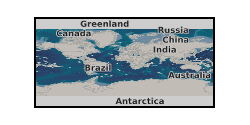
X-ray CT scan dataset of Darley Dale sandstone sample tts6. This sample was deformed in a true triaxial apparatus, and is fully described in the PhD thesis of Stuart (1992, UCL). The sample is a cube, measuring approximately 50 mm on a side. The sample experienced two sets of true triaxial deformation (test DDSS0009 and DDSS0010), with different applied stresses in the 1, 2 and 3 directions. This deformation produced distinct families of brittle microcracks, which were detected using acoustic emissions and seismic velocity analysis. This X-ray CT scan dataset was collected in 2019 at the University of Aberdeen by Dr Stewart Chalmers and Dr Dave Healy.
-

The data includes the raw mechanical data (time, load, displacement, pore pressure, pore pressure volume and confining pressure) and the meaningful processed data used to plot figures and draw main conclusions (stress, strain, strain rate, pore volume change, effective mean stress, inelastic strain, yield points and Youngs modulus). In total 10 samples of Bluersville Sandstone were deformed under either constant strain rate or constant stress (creep) conditions and at room temperature, 75°C, 150 °C. Bluersville Sandstone is from Bleurville, Vosges, north-eastern France. This pale beige coloured sandstone has a starting porosity of 22.7%Used as clean, porous sandstone of homogenous nature. Data generated at University College London on a conventional triaxial apparatus. This dataset is used and fully described/interpreted in the paper: M. Jefferd, N. Brantut, P.G. Meredith and T.M. Mitchell, The Influence of Elevated Temperature on Time Dependent Compaction Creep in Sandstone , submitted to J. Geophys. Res.
-

Rhenium-osmium abundance and isotope data obtained for the Kyoei-Sakin-zawa Creek Section, Japan. Sample collection August 2021 principally funded by NSF-NERC award. The approximately 340 m stratigraphically thick Cretaceous section mainly comprises organic bearing siltstone, sandstone and interbedded tuff horizons associated with the OAE1d (Oceanic Anoxic Event 1d) interval.
-

Data recorded during hydrostatic pressurisation and triaxial rock deformation experiments of Westerly granite and Darley Dale sandstone. Data consists of mechanical data (load, displacement, confining pressure) and pore pressure data (up- and downstream pore pressure, upstream intensifier volume, four pore pressure transducers mounted on sample). Contains all data necessary to evaluate the results presented in the paper entitled: 'Fluid pressure heterogeneity during fluid flow in rocks: New laboratory measurement device and method' by Brantut and Aben, submitted to Geophysical Journal International, and available at arXiv (arXiv:2006.16699).
-
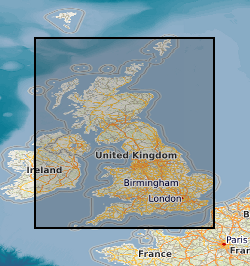
Field photographs of rock formations or modern precipitates from the sedimentary environment. Samples were collected throughout the UK. This data was collected between February 2019 and November 2019. This data was collected to better understand the low temperature cycling of Telurium (Te) and Sellenium (Se) in the geological environment. For example, a range of ochre samples were included in this data. Ochres are a modern precipitate commonly found in rivers and streams which flow through geographical areas with a history of mining resources which are rich in sulphides. Iron from the sulphides are leached out and deposited downstream, coating river and stream beds, giving a red, yellow or orange colouration. Ochres can be a sink for trace metals such as Te and Se, therefore studying these environments could be informative from a resource perspective but also from an environmental hazard perspective. This data would be useful for researchers who require reference photographs for similar studies or as an aid for resampling.
-
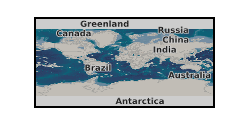
The dataset describes the results of high pressure experimental measurements of three contrasting 'tight' rocks; a Bowland Shale, a Haynesville shale and Pennant sandstone. The results are tabulated as a csv file, listing experimental parameters, confining pressure, argon gas pore pressure and permeability. complementary measurements of key petrophysical data are provided - bulk modulus of compressibility, porosity TOC and density.
-
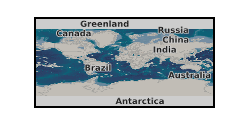
EPSRC grant EP/L012227/1: Development of Unified Experimental and Theoretical Approach to Predict Reactive Transport in Subsurface Porous Media. The effect of pore-scale heterogeneity on non-Darcy flow behaviour is investigated by means of direct flow simulations on 3-D images of Bentheimer sandstone and Estaillades carbonate. The critical Reynolds number indicating the cessation of the creeping Darcy flow regime in Estaillades carbonate is two orders of magnitude smaller than in Bentheimer sandstone, and is three orders of magnitude smaller than in the beadpack. Also available at https://www.digitalrocksportal.org/projects/11, DOI:10.17612/P77P49. Further details can be found in Bagus P. Muljadi, Martin J. Blunt, Ali Q. Raeini, Branko Bijeljic. The impact of porous media heterogeneity on non-Darcy flow behaviour from pore-scale simulation. Advances in Water Resources. 2015. http://dx.doi.org/10.1016/j.advwatres.2015.05.019.
-
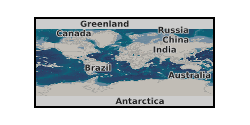
Porosity of core samples SSK111464 (sandstone) and SSK111465 (shale) calculated using backscatter electron SEM images of carbon coated thin sections processed in ImageJ Fiji software. 85 images of SSK111464 (sandstone) used and 74 images of SSK111465 (shale) at various magnifications. Core samples from UKGEOS Glasgow Observatory, borehole GGC01. Samples and data are derived from the UK Geoenergy Observatories Programme funded by the UKRI Natural Environment Research Council and delivered by the British Geological Survey.
-

These images were acquired using micro computed tomographic imaging of 4 sandstone plugs taken at various depths in the Glasgow UKGEOS borehole GGC01. GG496 (170.07 m), GG497 (168.66 m), GG498 (73.37 m) and GG499 (135.06 m). These samples are further detailed and analysed in the following article: http://dx.doi.org/10.1144/petgeo2020-092.
-

Loan IDA number - IDA271576. No data was obtained for microbial cultivation experiments with core samples SSK111460 and SSK111461 from UKGEOS Glasgow Observatory, borehole GGC01. Samples and data are derived from the UK Geoenergy Observatories Programme funded by the UKRI Natural Environment Research Council and delivered by the British Geological Survey. Attached document described methodology of enriching sandstone core (SSK111461) in different media types and shale core (SSK111460) in synthetic groundwater. No microbial growth was seen after 7 months.
 NERC Data Catalogue Service
NERC Data Catalogue Service